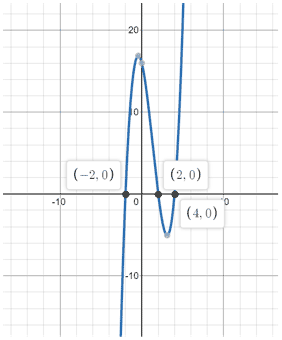Solving inequalities
Solving inequalities is similar to solving equations in that for both, you will be trying to solve for some variable x. The difference between the two is that solving equations gives an exact value of x while solving inequalities gives a range of values that x can equal.
Generally, you will not see the not equal to sign (≠). The not equal to sign is typically used to show that a statement is false. For example, 5 ≠ 9.
To solve inequalities, you can apply most of the same principles used when solving equations. When solving inequalities, nothing changes when adding, subtracting, or multiplying and dividing by a positive number:
Examples
| → | ||
| → | ||
| → | ||
| → |
However, when multiplying by a negative number, you need to flip the inequality symbol (< → > and vice versa; ≤ → ≥ and vice versa):
| → | ||
| → |
It is also necessary to flip the sign when switching the positions of the expressions on either side of the inequality. Pay attention to which side the "arrow" of the inequality points.
Example
| is the same as | ||
| is the same as |
Note that multiplying or dividing an inequality by a variable can be problematic if you don't know whether the variable is strictly positive or negative. This is because most variables can be positive or negative, so you wouldn't be able to determine whether the inequality needs to be flipped. This is something you are likely to encounter when working with rational inequalities.
Example
If you were solving an equation, you may think it would be viable to divide both sides by a to cancel them out. This is true for inequalities where we know that the variable is always positive:
For :
→
In this case, we do not know whether a is positive or negative. Therefore if a is negative, the sign would need to be flipped:
For :
→
There is a discrepancy between the two answers, so there is no solution.
plotting the solution
You can plot the solution to an inequality on a number line. Note that the same rules for open and closed intervals and graphs apply here as well. When using the < or >, leave the endpoint(s) open. When using the ≤ or ≥ symbols, fill in the endpoint(s).
Example
x < 6:

x ≥ 2:

inequalities involving polynomials
When solving inequalities involving polynomials, you need to simplify the inequality so that one side equals zero. This is similar to the format of a quadratic equation ax2 + bx + c = 0. By setting one side of the inequality equal to zero, you create a relationship where the solution to the inequality depends on the zeros of the polynomial.
Thus, the first step is to find the zeros of the function. For quadratics, you can factor or use the quadratic formula. For more complex polynomials, you can also try to factor by grouping, or use synthetic division.
x3 - 4x2 - 4x + 16 ≤ 0
x2(x - 4) - 4 (x -4) ≤ 0
(x2 - 4)(x - 4) ≤ 0
(x + 2)(x - 2)(x - 4) ≤ 0
Zeros at x = -2; 2; 4
After finding the zeroes of the expression, you need to set the intervals (based on the zeros) at which you will test values. The basic idea is that the function will not change sign between two zeros because the curve cannot cross the x-axis (if there are no zeros between them).
Intervals: (-∞, -2) ∪ (-2, 2) ∪ (2, 4) ∪ (4, ∞)
Next, create a table where each column is an interval that you set, and each row is one of the factored parts of the polynomial. The bottom row will be the entire polynomial.
In this table, the second column is the interval (-∞, -2), the third is (-2, 2), the fourth is (2, 4), and the last column is (4, ∞).
| -∞ – -2 | -2 – 2 | 2 – 4 | 4 – ∞ | |
| (x + 2) | - | + | + | + |
| (x - 2) | - | - | + | + |
| (x - 4) | - | - | - | + |
| (x + 2)(x - 2)(x - 4) | - | + | - | + |
In the table above, the negative and positive values indicate whether the values in the interval will be positive or negative for the given expression in the respective row. For the bottom-most row, the sign can be determined by multiplying the signs in the other rows in the same column.
For example, for the interval (-∞, -2), the respective signs are: (-), (-), (-). Since there are three negatives, the sign for the last row is also negative. For the interval (-2, 2), (+), (-), (-) result in a (+), and so on.
Using the bottom row of the table, we can now determine on which intervals the polynomial is less than or equal to 0. In this particular example, the answer is:
(-∞, -2] ∪ [2, 4]
Pay attention to whether or not the inequality includes 0. If it does, you will need to use brackets instead of parentheses in your answer.
You can also use a graph of the function to confirm the zeros:

